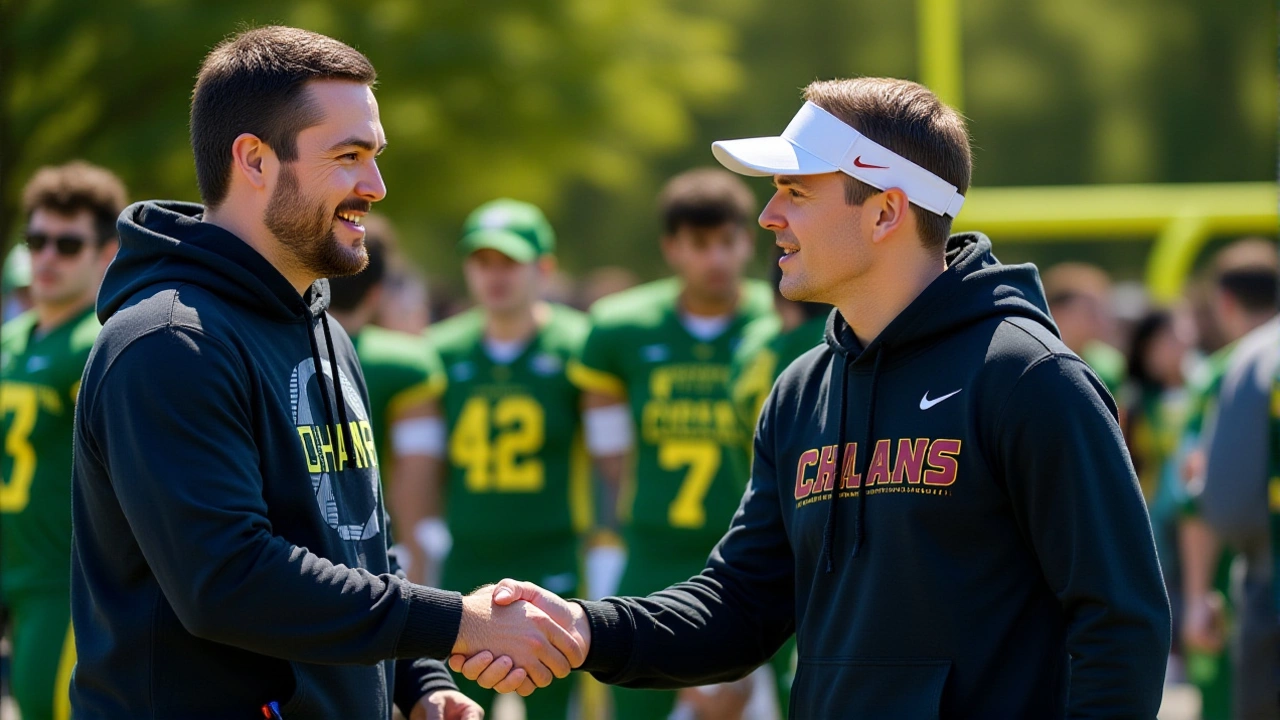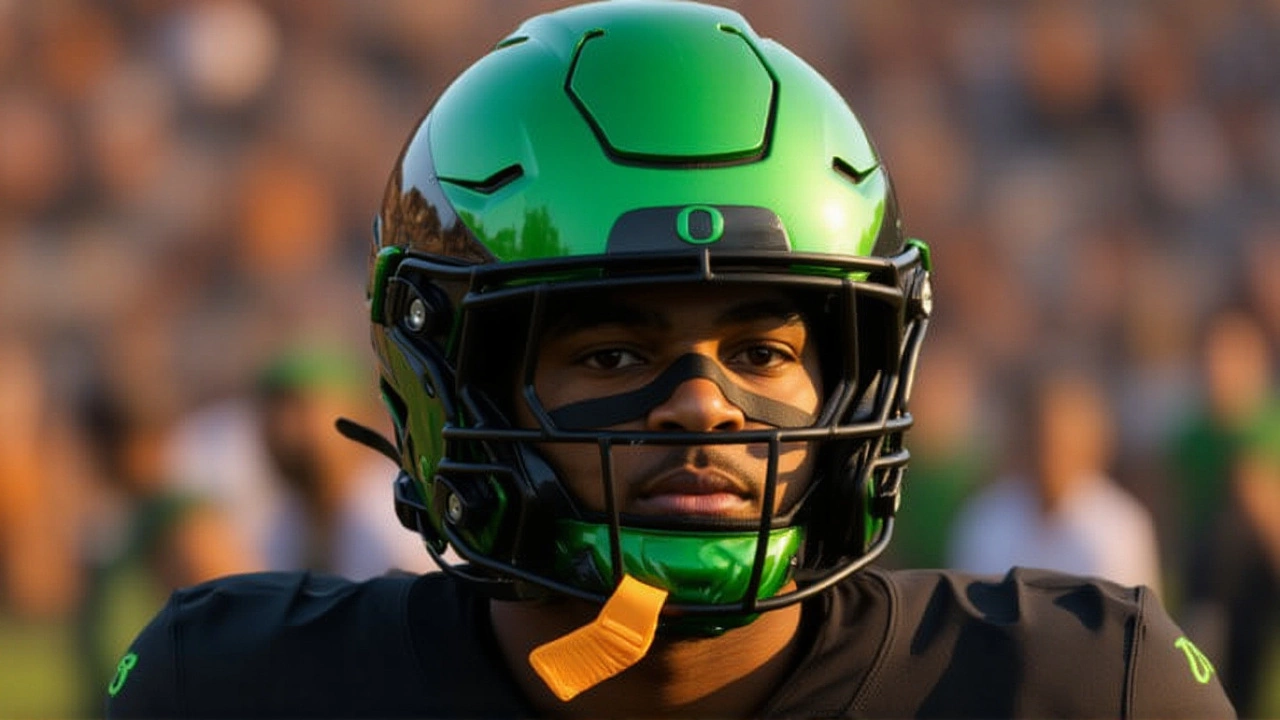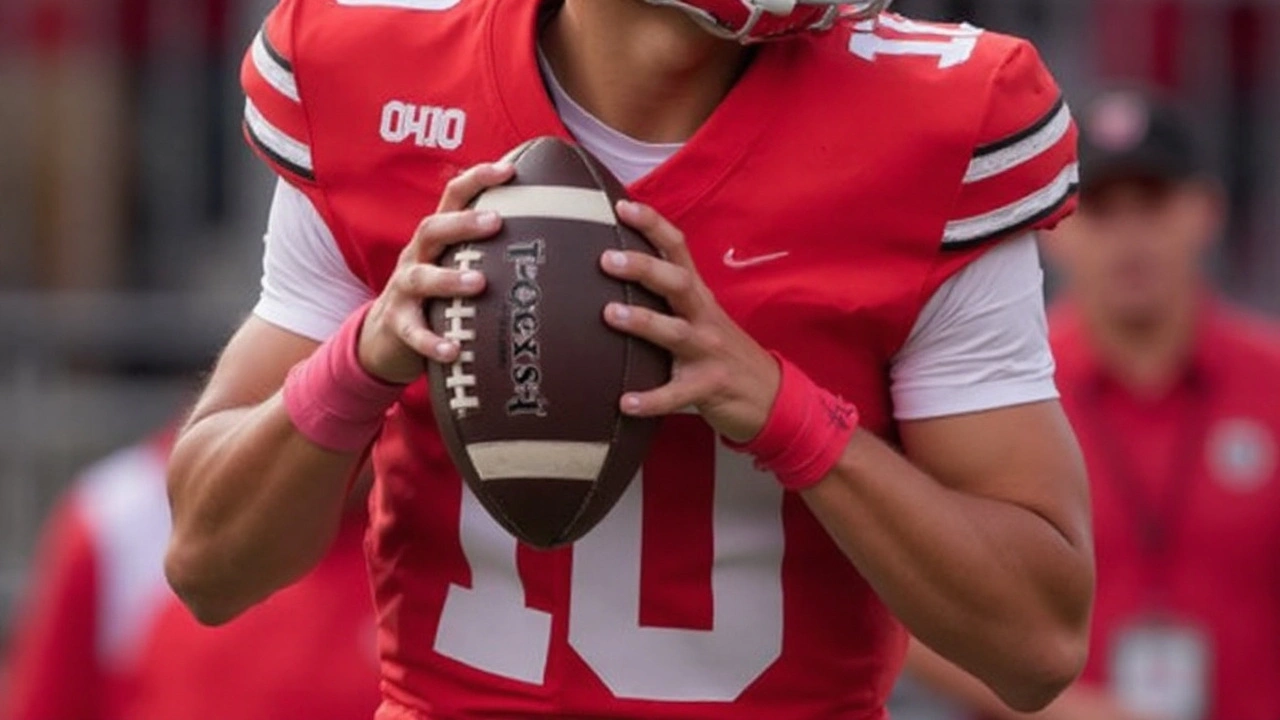On November 22, 2025, at Autzen Stadium in Eugene, Oregon, the University of Oregon Ducks didn’t just win a football game—they sent a message. Beating the University of Southern California Trojans 42-27 on Senior Day, the No. 7 Ducks handed the No. 15 Trojans their first loss in over two months and, more subtly, took a jab at the Southeastern Conference’s scheduling philosophy. Head coach Dan Lanning, 39, didn’t mince words after the game: "We didn’t play Chattanooga State today, right? Like some other places." The line, delivered with a smirk and a shrug, wasn’t just a boast. It was a calculated dig at SEC teams that had spent the same weekend playing tune-up games against FCS opponents while Oregon battled a top-15 contender on their home field.
How Oregon Won the Battle—Despite the Stats
The box score looked lopsided in USC’s favor on paper. The Trojans had 26 first downs to Oregon’s 23, gained 436 total yards to Oregon’s 382, and held the ball for over 33 minutes. But football isn’t played on paper. Oregon forced two critical turnovers, converted 2 of 4 fourth-down attempts (USC went 0 for 1), and scored 28 unanswered points between the second and fourth quarters. Quarterback Bo Nix threw for 330 yards and three touchdowns, while the Ducks’ defense held USC’s star running back, MarShawn Lloyd, to just 68 yards on 22 carries—a far cry from his 150-yard average coming in. The final drive, a 14-play, 78-yard touchdown march capped by a 3-yard run from freshman De’Von Smith, sealed it. Autzen Stadium, packed to its 54,000-seat capacity, erupted as the clock hit zero. Fans wore black. The seniors—eight of them—were carried off the field.Why the Scheduling Comment Matters
Lanning’s remark wasn’t random. On the same weekend Oregon faced USC, Southeastern Conference teams like Alabama, Georgia, and LSU played non-conference games against teams like Appalachian State, Western Carolina, and Mississippi Valley State. Those wins padded their records, but didn’t test them. Meanwhile, Oregon, in its second season in the Big Ten Conference, had to play nine conference games—no easy outs. The Big Ten’s structure demands toughness. The SEC’s allows for more flexibility. And Lanning, who played linebacker at Georgia before coaching at Oregon, knows both systems inside out. "This conference is a really good conference," he said. "It’s competitive. We got to take advantage of playing a good team today and attacking that." The comment resonated because it’s true. College football’s playoff selection committee has long criticized weak schedules. This year, the debate is hotter than ever. Oregon’s win over USC—a team that entered the game 10-1 and ranked No. 15—is now their most impressive resume-builder since their 2024 Fiesta Bowl win over Ohio State. The Ducks’ strength of schedule now ranks in the top 10 nationally. USC’s? Dropped into the top 25 after this loss.
The Playoff Picture: One Game Left
Oregon now stands at 8-3. A win against the University of Washington Huskies on November 29 in Seattle would push them to 9-3—and almost certainly lock in their second straight College Football Playoff berth. Lose, and they’re left hoping for a two-loss SEC team to stumble, or for the committee to value their win over USC more than a perfect record against weaker opponents. The Huskies, at 8-3 themselves, are no pushover. They’ve beaten Oregon in three of the last four meetings, including last year’s 34-31 overtime thriller in Eugene.USC’s Fall from Grace
For the Trojans, this loss was more than a blemish. It was a collapse. After starting the season 10-0, they’ve now lost two of their last three, including a 31-24 defeat to Notre Dame in October. Their offense, once explosive, looked disjointed. Quarterback Conner Weigman threw two interceptions and was sacked four times. The defense, which had allowed just 18.4 points per game entering Saturday, gave up 42 to a team that had scored fewer than 30 in five of its last six games. USC’s playoff hopes are officially dead. Their final game—a home matchup against UCLA on December 7—now means little beyond pride.
What This Means for the Big Ten
The Big Ten’s expansion into the West Coast was supposed to be a power play. This game proved it’s working. Two elite programs, both new to the league, delivered a high-stakes, nationally televised classic. The game drew 5.1 million viewers on ABC—up 22% from last year’s Oregon-USC matchup. It wasn’t just about the score. It was about credibility. The Big Ten isn’t just adding teams. It’s adding relevance. And Lanning’s comments? They were the league’s way of saying: We don’t need to schedule easy games to look good. We beat the best.Frequently Asked Questions
How did Oregon win despite being outgained in total yards?
Oregon won by capitalizing on turnovers and efficiency. They forced two key interceptions and converted 50% of their fourth-down attempts (2 of 4), while USC went 0 for 1. The Ducks also held USC to just 68 rushing yards, neutralizing their biggest offensive weapon. Even with 54 fewer total yards, Oregon’s scoring drives were quicker and more decisive, with three touchdowns coming on drives under 2 minutes.
Why did Dan Lanning target the SEC in his comments?
Lanning’s remarks were a direct response to SEC teams playing FCS or low-tier FBS opponents the same weekend Oregon faced a top-15 team. The Big Ten’s nine-game conference schedule leaves no room for soft non-conference games, while the SEC’s eight-game format allows it. Lanning, a former Georgia player, knows this dynamic well—and used the moment to highlight the legitimacy of Oregon’s win against a ranked opponent.
What’s at stake for Oregon in their next game against Washington?
A win over the Huskies on November 29 would give Oregon a 9-3 record and all but guarantee their second consecutive College Football Playoff berth. A loss, even with a win over USC, would leave them vulnerable to teams with perfect or one-loss records from the SEC or Big 12. The committee values strength of schedule, and Oregon’s path—beating USC, Oregon State, and likely Washington—could still edge out a 12-1 team from a weaker conference.
How has the Big Ten’s expansion impacted its national standing?
The addition of Oregon and USC has elevated the Big Ten’s profile significantly. This game drew 5.1 million viewers, the highest for a Big Ten matchup since 2023. The league now has two of the most storied programs in college football, both with massive fanbases and national TV appeal. More importantly, they’re playing meaningful games late in the season—not tune-ups. That’s changing perceptions: the Big Ten isn’t just a Midwest league anymore. It’s a national powerhouse.
Did USC’s loss hurt their recruiting prospects?
Yes. USC had five five-star recruits verbally committed before the season, with three citing the team’s playoff potential as a key factor. After losing to Oregon and Notre Dame, those commitments have grown shaky. Coaches at Alabama and Ohio State are now actively recruiting those players. USC’s inability to close out big games has raised questions about its program’s consistency under head coach Lincoln Riley.
What’s the historical significance of this Oregon-USC game?
It’s the first time since 2011 that two teams ranked in the top 15 met as conference opponents in the Pac-12 or Big Ten. More importantly, it’s the first time since the Big Ten’s 2024 expansion that a game between two new members delivered playoff implications. The 42-27 scoreline ties for the highest-scoring Oregon-USC game in history. And with both teams now in the Big Ten, this game may mark the start of a new rivalry—one that could rival Ohio State-Michigan in intensity.






